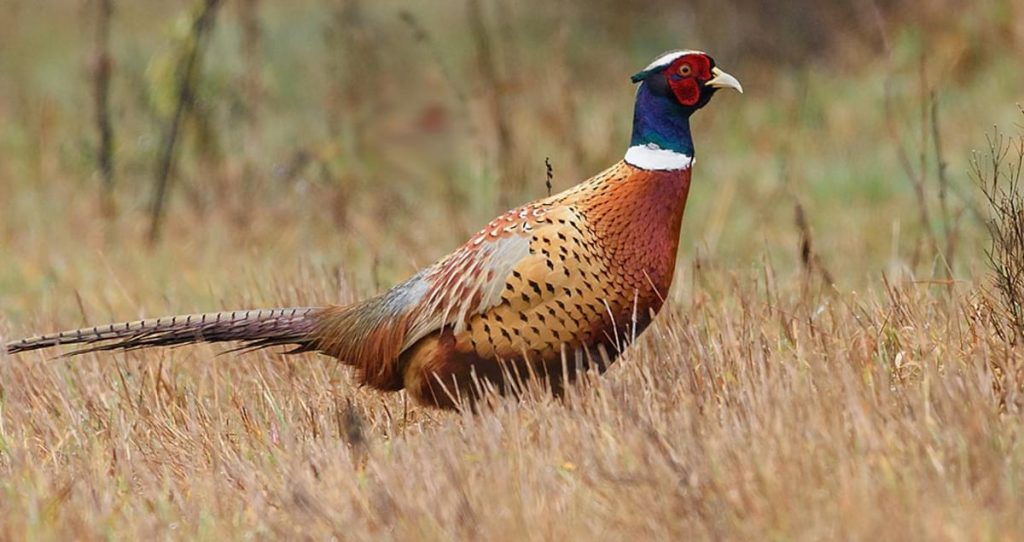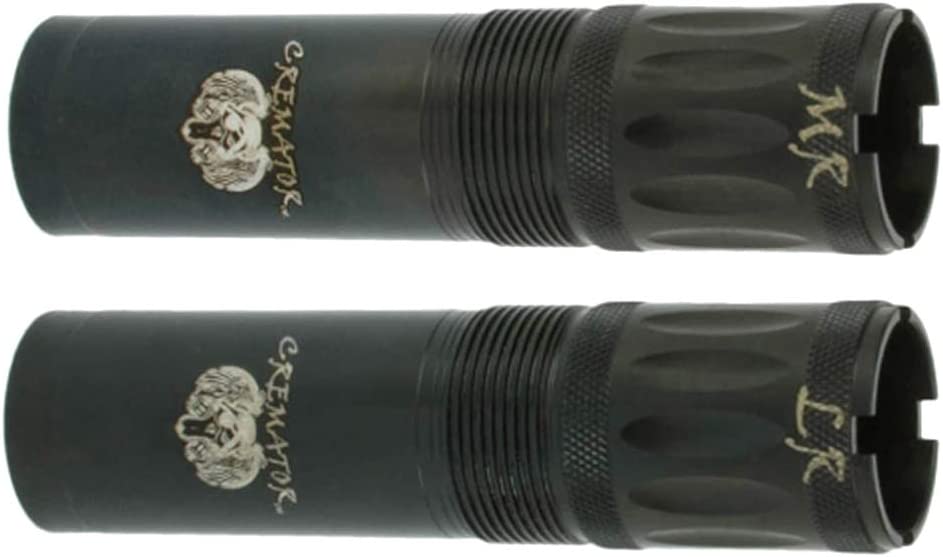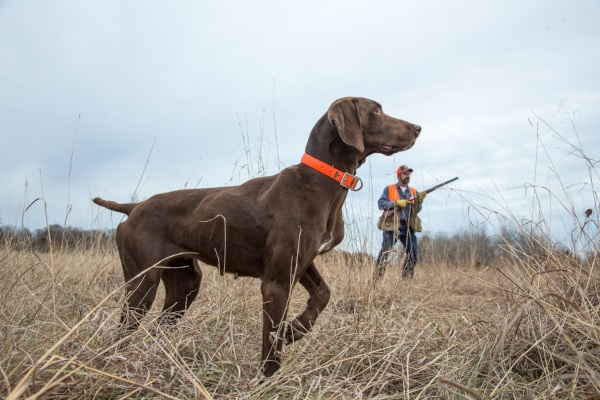
If you are into the outdoor tradition of pheasant hunting, you will appreciate the need to have a good choke tube for your gun that gives you better aim. With a variety of chokes to choose from in the market, let’s look at the 3 best choke for pheasant.
The first choke we shall look at is the Carlson’s Beretta Mobil 12-Gauge Sporting Clay Modified; the second one is the Patternmaster 12-Gauge Compatible with Benelli/Beretta Mobile Code Black Duck; and the third is the Carlson’s Beretta Benelli Mobil Cremator Non-Ported Waterfowl Choke Tube, 12 Gauge, MR & LR.
| PRODUCT | DETAILS | |
| Carlson's Beretta Mobil 12-Gauge Sporting Clay Modified | ||
 | Price: $$ Weight: 0.1 Pounds Material: Stainless Steel Size: 12 Gauge | |
| Patternmaster 12-Gauge Compatible with Benelli/Beretta Mobile Code Black Duck | ||
 | Price: $$$$ Weight: 0.2 Pounds Material: Stainless Steel Size: 12 Gauge | |
| Carlson's Beretta Benelli Mobil Cremator Non-Ported Waterfowl Choke Tube, 12 Gauge, MR & LR | ||
 | Price: $$$$ Weight: 0.3 Pounds Material: Stainless Steel Size: 12 Gauge | |
Contents
Carlson’s Beretta Mobil 12-Gauge Sporting Clay Modified
If you want to enjoy the American pastime of pheasant hunting, you should put your best foot forward by equipping yourself with the ideal choke that fits your gun and produces a good shot pattern. Carlson’s Beretta Mobil 12-Gauge Sporting Clay Modified choke is a perfect fit for your Beretta or Benelli shotgun.

Why the Carlson’s Beretta Mobil 12-Gauge Sporting Clay Modified choke tube is popular
• It is durable
The Carlson’s Beretta Mobil 12-Gauge Sporting Clay Modified is made from 17-4 Ph stainless steel. The material is heat treated to make it stronger and longer lasting.
• It offers better shooting patterns
The choke’s parallel section is 25% larger than conventional shotgun chokes allowing it to produce patterns that are more consistent than your standard choke tubes.
• It is easy to use
Some chokes are sometimes tedious to use as they slip and often become tricky to grip. Carlson’s Beretta Mobil 12-Gauge Sporting Clay Modified chokes have been knurled on the end, making it very easy for you to fix and remove them as you please.
Choke Tube Specifications
This modified cylinder choke tube from Carlson’s is 12 Gauge, and because it is extended it offers a better shotgun pattern. It can be used with lead, copper-plated, nickel, Hevi-shot, Bismuth, tungsten or steel shots.
As for the choke size, it has dimensions of 4 by 1.5 by 1.13 inches. Another great feature that qualifies this Beretta Mobil 12-Gauge Sporting Clay Modified as one among the 3 best chokes for pheasant hunting is its weight – it only weighs 1.6 ounces!
Patternmaster 12-Gauge Compatible with Benelli/Beretta Mobile Code Black Duck
According to many users, the cold black duck is the most versatile choke tube in the world. It has a very effective patented stud ring design that reduces the shot string, giving you a much tighter pattern.
If you intend to go pheasant hunting, the code black duck will increase your chances of success by giving you better shots from longer distances.

Why you should buy a Patternmaster 12-Gauge Compatible with Benelli/Beretta Mobile Code Black Duck
• It has more accuracy at longer distances
The code black duck choke extends out of the barrel’s end by 1 inch, and it has an effective range of up to 60 yards. If you get double barrel, you should use two chokes.
• It is a simple but effective choke
The code black duck choke can be effective at varying ranges against different targets, making it easy for you to move from one hunt to another.
Choke Tube Specifications
The Patternmaster Mobile Code Black Duck is an American-made 12 Gauge barrel, which is made out of titanium-infused 17-4 Ph aircraft-quality stainless steel. This material is actually heat-treated for best performance.
The dimensions of this choke tube are 7.13 by 3.78 by 0.94 inches, and the weight is 0.09 Kilograms.
The choke is best used with ammunition of 1550fps and below, in order to achieve the best results. It should not be used with ammunition that has flight control wad.
Patternmaster’s Code Black Duck with its patented stud ring design, shortens the shot string immensely and increases your chances of a successful hunt, making it one of the 3 best chokes for pheasant hunting.
Carlson’s Beretta Benelli Mobil Cremator Non-Ported Waterfowl Choke Tube, 12 Gauge, MR & LR
Carlson’s Mobil Cremators use Triple Shot Technology that allows the transition from the shotgun bore to the final constriction to be more gradual, which then minimizes pellet deformation, has fewer flyers, and produces tightest pattern.
This choke is offered in two constrictions: the Mid-Range (MR). 710 and the Long Range (LR). 700.

Why you should buy a Carlson’s Beretta Benelli Mobil Cremator Non-Ported Waterfowl Choke Tube, 12 Gauge, MR & LR
• More Dense Patterns
The Carlson’s Mobil Cremator Non-Ported Waterfowl Choke Tube’s parallel section is 25% larger, hence the choke produces tighter and denser patterns. This makes it easier for you to hit your target accurately at longer distances. With these and more qualities,it is easy to see why it is considered one of the 3 best chokes for hunting pheasants.
• The choke is long-lasting
This choke is made using 17-4Ph stainless steel, which has been heat-treated to optimum levels to improve its performance and to make it more durable.
• It is more accurate
Thanks to the choke’s triple-shot technology, many users have praised its performance. They say that since they started using the Mobil Cremator, they are able to shoot different targets at much longer distances; whether they are pheasants, ducks or geese.
Choke Tube Specifications
The Carlson’s Mobil Cremator is made from precision machined 17-4 Ph stainless steel that has been heat treated.
The dimensions for this choke are 8.46 by 4.8 by 1.14 inches, and its weight is 0.13 kilograms.
The choke is offered in two constrictions: the Mid-Range (MR). 710 and the Long Range (LR). 700. So it’s longrange chokes.
In summary, these three choke models are considered the 3 best chokes for pheasant hunting, mainly for their accuracy, durability, and ease of use. Even though pheasants are not fast fliers and have a predictable flight pattern, it is important to arm yourself with the best choke in order to enhance your chances of a successful hunt.
The three aftermarket choke are also readily available in the market, and so finding one for your new or old shooting gear should not be a problem.
The strength and durability of a choke tube is also an important factor to consider when trying to acquire one, and in this case all the three chokes are manufactured from steel. This means they are durable.
They also give you the freedom to safely operate using a wide range of ammunition and shot size. Lead, copperplated, nickel, Hevi-shot, Bismuth, tungsten and steel shots may all be used safely with any of these aftermarket choke tube.
Pheasant Hunting Tips
Pheasants are one of the most popular game birds in North America. Though they can be challenging to hunt, many upland hunters enjoy the challenge and the rewards that come with a successful hunt in the wild game.
These birds are fast and agile, making them difficult to take down. People hunt pheasants because of the meat they provide and also for sport.
When it comes to pheasant hunting, there are a few things that you can do to increase your chances of success. Below are tips for hunting pheasant that may help you the next time you go out.
Be prepared
Hunting pheasants is not just about heading out into the field with your hunting gear. To be successful, you need to take some time to prepare. First, make sure you have the proper gear. Of course, you’ll need a shotgun and ammunition, but you’ll also need sturdy boots, camouflage clothing, and a hunting dog if you want to give yourself the best chance at success. Unlike the wilderness survival, you just carry the necessary survival gear. You should also pattern your shotgun.
Next, familiarize yourself with the area you’ll be hunting in. Take some time to walk around the property and get to know the lay of the public land. This will help you find birds when you’re out hunting. Finally, ensure you understand the local laws and regulations regarding pheasant hunting. Different states have different rules, so it’s essential to be aware of the regulations in your hunting area.
Patience is key
Hunting is not a race, and the most successful hunters usually take their time. Rushing through the woods in search of upland game is not only fruitless, but it can also be dangerous. If you want to be successful, you need to be patient and take your time.
There is no guarantee that you will be successful every time you go out. Lower your expectations but stay motivated. Don’t lose hope if you don’t see any game after a few hours. The key is to be patient and keep at it. Be consistent with your hunting schedule; eventually, you will see results.
Be quiet
One of the most important things to remember when hunting pheasants is to be quiet. Pheasants are very skittish birds and will easily startle if they hear any unusual noise. This means you need to be very careful when moving around in the woods or field where you are hunting. Avoid making any loud noises, such as stomping your feet or coughing. Also, keep your voice down when talking to your game hunting partners. If you can avoid making noise, you will have a much better chance of getting close enough to the birds for a successful shot.
Know where to hunt
You can’t just go out into a field and start shooting. You need to know where to find pheasants. They don’t just fly around in the open. Pheasants like to stay hidden in the cover.
The best place to look for pheasants is in agricultural fields with a lot of cover. Look for areas with tall grass, weeds, or other vegetation. Pheasants will also use hedgerows, woodlots, and thickets for cover.

Also, pheasants like to stay near water holes. Look for them near ponds, streams, or other water sources.
When you’re out hunting, keep an eye out for pheasant tracks. You can often find them in fields with a lot of cover. If you see tracks, it’s a good sign that there are pheasants nearby.
Pheasants are also most active during the early morning and evening hours. So, if you’re serious about hunting them, you need to be out early and stay out late.
Practice makes perfect, and this applies to pheasant hunting and other activity like turkey hunting and duck hunting. Before heading out into the field, do a lot of target practice. This will help hone your skills and increase your chances of success when it comes time to hunt.
Also, study waterfowl hunting techniques. A lot of helpful information can help you be more successful. The more knowledgeable you are, the better your chances of bagging a few late season pheasants. Maybe you can prepare some wild game recipes.
Practicing and learning as much as possible goes a long way towards making you a successful pheasant hunter. So make sure to put in the time and effort before heading out into the field. It will pay off in the end to give you the knockdown power.
There are regulations
Pheasant hunting is a popular pastime in many parts of the world, and specific regulations must be followed to hunt these birds. Knowing the rules before heading out on a pheasant hunt is essential, as failing to do so could result in serious penalties.
In most jurisdictions, pheasant hunting is only allowed during specific times of the year. The pheasants are the season birds. The hunting season typically runs from October to February, but this can vary depending on the location. It is important to check with the local authorities to find out when the late season is in your area.
Pheasants can only be hunted with certain types of firearms. In general, shotguns are the best choice for hunting pheasants, but some areas may also allow the use of rifles. You should also consider the shotgun shell and shotguns loads. Check with the local authorities to determine what type of firearms are permitted for pheasant hunting in your area.
There are limits on how many pheasants can be taken during a hunt. In most cases, hunters are only allowed to take two or three pheasants daily. This limit is in place to help ensure that the pheasant population is not depleted.
A dog may help
Sometimes, you may shoot a pheasant, but it won’t fall immediately. In these situations, having a dog to help track and retrieve the bird can be extremely helpful. Dogs have an acute sense of smell and can often find downed birds that humans would never be able to locate.
Additionally, dogs can be trained to flush birds out of cover. This can be useful when hunting in areas with dense vegetation or trees. You will have a much better chance of getting a shot off by flushing the birds out into the open.
Ensure that you have a good-quality leash and collar for your dog when you are out bird hunting. You don’t want your dog getting lost in the wilderness or running off after a bird. A good leash and collar will help to keep your dog safe and under control while you are hunting.
Conclusion
Pheasant hunting can be a fun and rewarding experience. However, it is vital to be well-prepared before heading out into the field. Following the tips above will give you the best chance of success when hunting pheasants.
